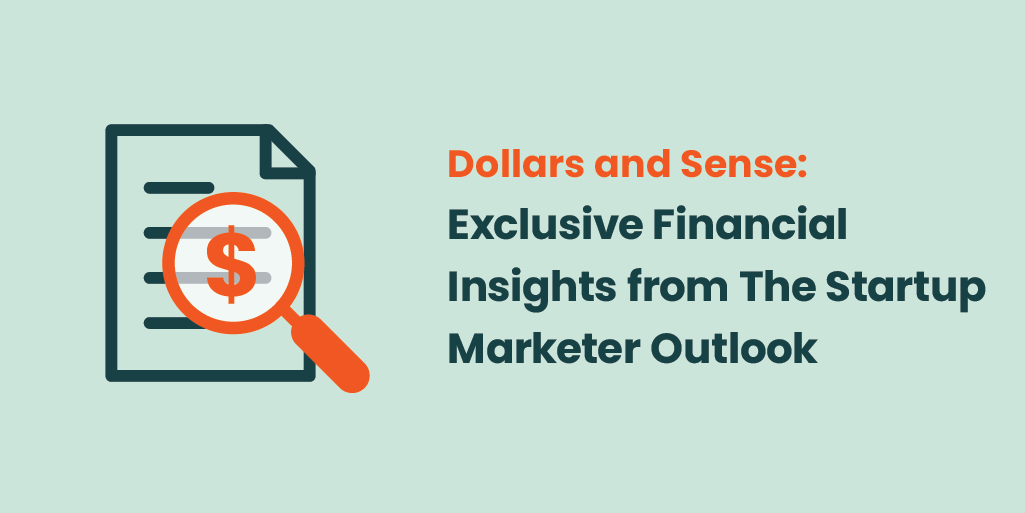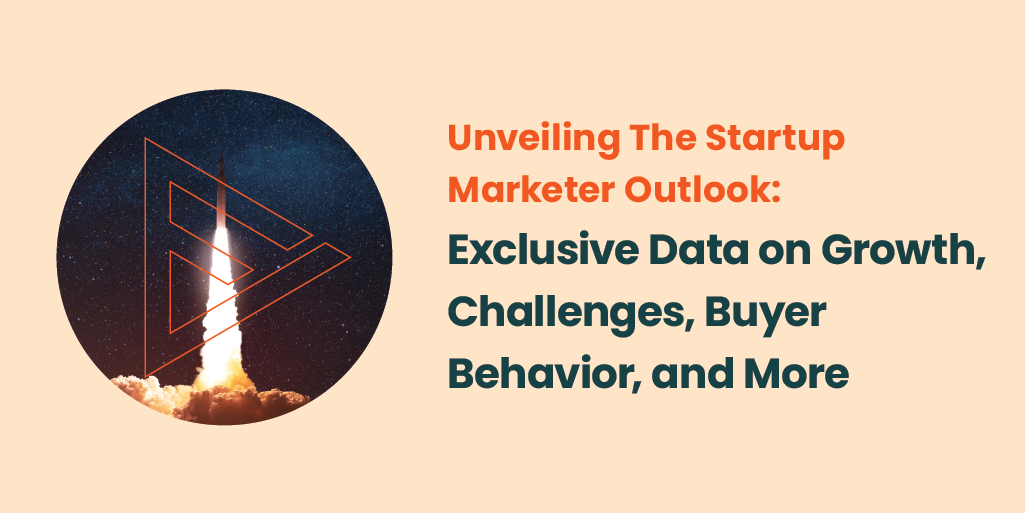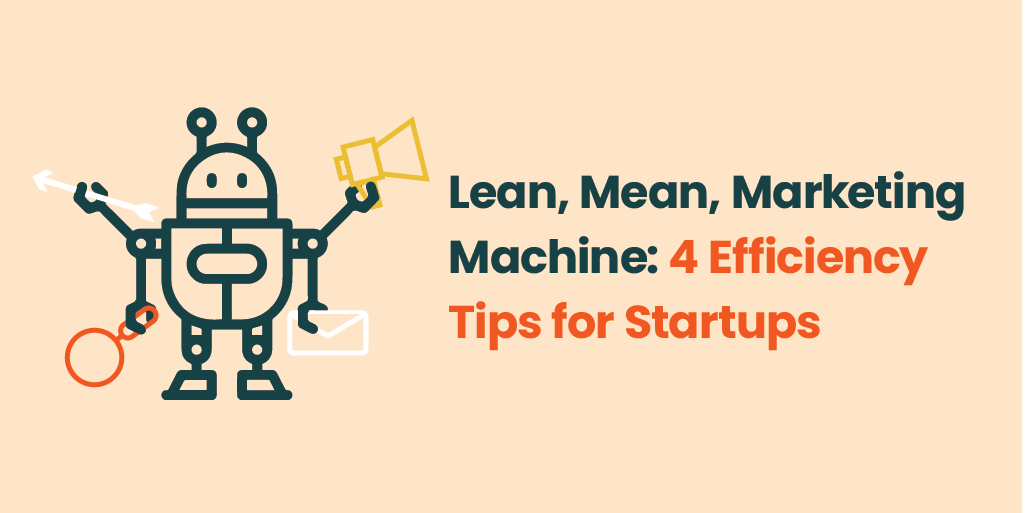Bank failures, down rounds, layoffs, and potentially record-low funding for SaaS and enterprise software startups — we’ve all seen the doom-and-gloom headlines pouring out of Startupland this year. But there have also been some silver linings, like an uptick in IPOs and growing investment in early-stage startups.
So, what’s going on inside startup marketing departments? When it comes to dollars and cents, the answer may surprise you.
In our exclusive new research report, The Startup Marketer Outlook, we asked 254 startup marketing leaders questions about revenue, budget, and costs — and the answers are cautiously optimistic.
As we highlighted in a previous blog post, a majority of startup marketers are ahead of their 2024 growth targets and are confident in their ability to meet them by the end of the year. That optimism extends to raising capital, as a quarter of them are actively building investor awareness ahead of a fundraise. For startup marketers who are currently 11-20% ahead of their 2024 growth target, a whopping 39% are focusing significant effort on investor awareness. Perhaps spurred on by the increase in early-stage funding at the beginning of the year, 25% of early-stage startup marketers are working to build investor awareness. Late-stage startup marketers have investor awareness on their radar too, as 24% have made it a key part of their strategy.
With or without extra funding, a quarter of startup marketers have found ways to grow their marketing spend. But if you think this increase only applies to the marketers who are ahead of their growth targets, think again. Even startup marketers who are significantly behind are putting more money towards marketing: nearly 30% of those who are 1-10% behind are spending more, and over 20% of those who are 11-20% behind are spending more.
But when it comes to dollars and cents, there are plenty of bumps in the startup marketing road too.
Many of our respondents admitted that customer acquisition is harder than it’s ever been. There are a number of reasons for that — changing buying behavior, economic uncertainty, aggressive competition, just to name a few — but the end result is higher customer acquisition costs. In fact, a quarter of startup marketers told us their customer acquisition costs are higher than they were last year. Unsurprisingly, that percentage climbs even higher for startups that are behind on their growth targets. Over one-third (34%) of startup marketers who are 1-10% behind and 35% of those who are 11-20% behind say their customer acquisition costs have grown over the past year.
It’s no surprise that one-third of startup marketers are actively working to reduce their customer acquisition costs. Late-stage startups are especially feeling this pressure, as 41% said they’re trying to lower their cost per customer.
What are startup marketers doing to reduce customer acquisition costs?
Here at Firebrand, we have seen a surge of interest in ABM so that every dollar spent is aimed at the most ideal targets who are more likely to close quickly and cost-efficiently. We’ve also seen lots of startup marketers who are surprised that an ABM platform like Demandbase isn’t needed to get started with ABM. Of course, Demandbase enables the most sophisticated ABM efforts (we wouldn’t be a partner if they didn’t!) but there are “ABM Lite” programs that are highly effective, either as a proof of concept or while the startup works to get big enough to afford a platform like Demandbase. In other words, if you think ABM is beyond your reach, think again.
Our PR team is also seeing interest in ABPR — a highly-targeted PR program that uses media readership and social engagement data to identify media outlets of most relevance to target decision-makers and uses intent data and social listening to develop campaigns that address their specific needs and concerns. Again, it’s all about reaching the most ideal prospects.
On the paid media front, we are encouraging our clients to take full advantage of remarketing because these audiences are, by default, warmer and more engaged with the brand. Remarketing ad campaigns are typically far more cost-efficient and, in turn, can lead to a lower customer acquisition cost.
On the content marketing side, we are seeing clients rely more heavily on email nurtures to warm net-new leads, re-engage cold leads, and accelerate the journey to closed-won revenue. We’re also seeing a surge in customer advocacy assets like case studies and videos because this is where startups can “walk the walk” and prove the impact they create. Like the other efforts, it’s all aimed at being more efficient to drive down customer acquisition costs.
What about budget?
Over a quarter (27%) of startup marketers said it is harder to secure marketing budget than it was last year. Late-stage startup marketers are more likely to feel the pinch, as a whopping 36% said getting budget this year is harder than last. In spite of the struggle, though, more than half of the startup marketers we surveyed (57%) are confident they will secure adequate budget.
Now that you’ve crunched some of the numbers, check out the full data report by downloading your own copy of The Startup Marketer Outlook.
Take a Deeper Dive into the Data
This is only a small sliver of what you’ll find in The Startup Marketer Outlook: In Pursuit of Peak Efficiency. Dive deeper into the numbers and explore a variety of intriguing findings — including priority tactics, shorter buyer journeys, and differences between early- and late-stage startups — by downloading our full report.
About the Author
Nicole Pytel is Vice President of Content Marketing at Firebrand Communications, leads Firebrand's Content Marketing team, and is one of the hosts of Firebrand's podcast FiredUp!
After starting her career as a TV journalist, Nicole has spent the past 15 years driving growth for B2B companies of all sizes, from scrappy startups to the Fortune 25. With deep expertise across brand positioning, go-to-market strategy, content development, and demand generation, Nicole helps tech brands turn breakthrough ideas into compelling, scalable content marketing programs.
Follow Nicole on LinkedIn, listen to her on FiredUp!, or read her insights on Firebrand's B2B tech marketing blog.





